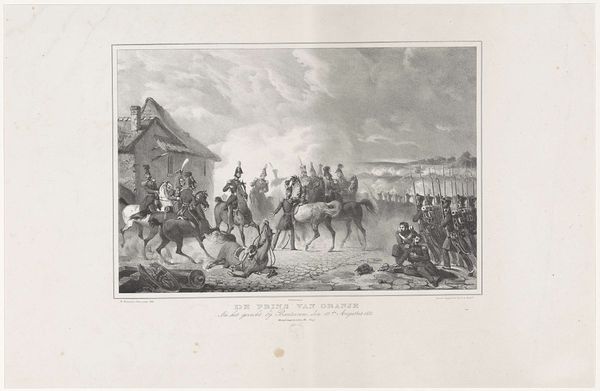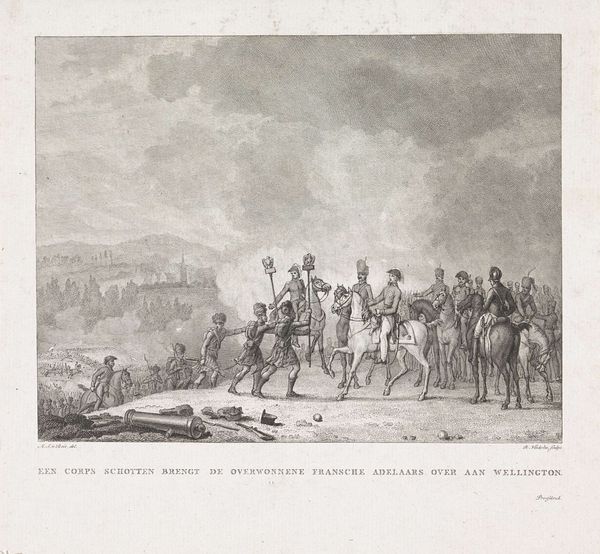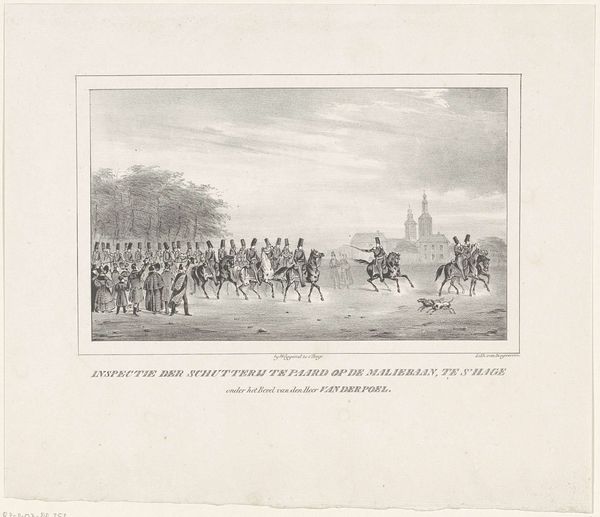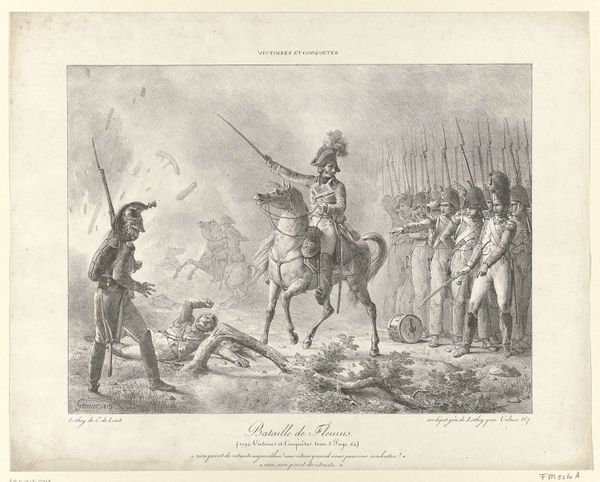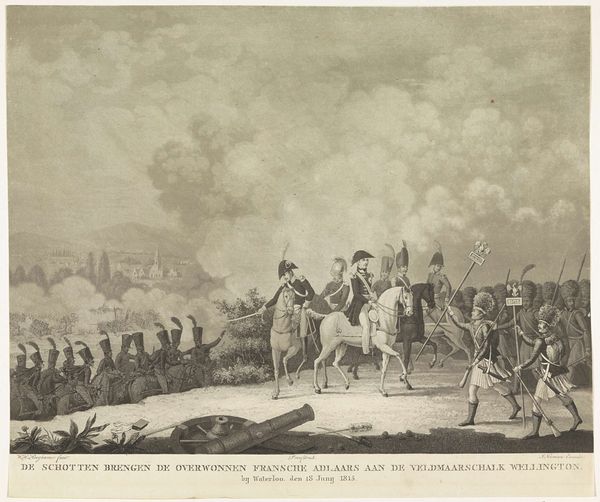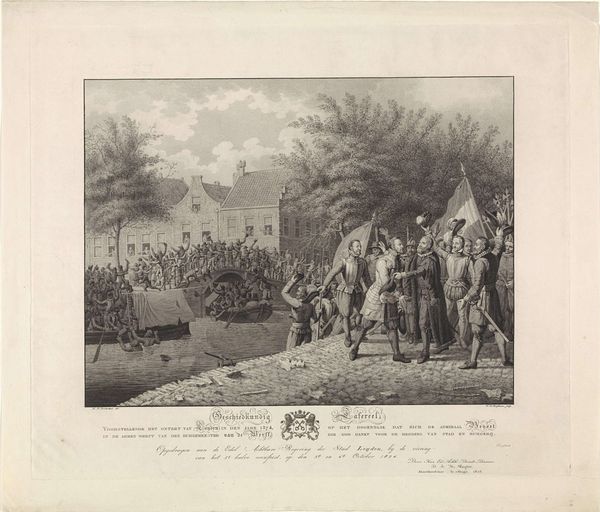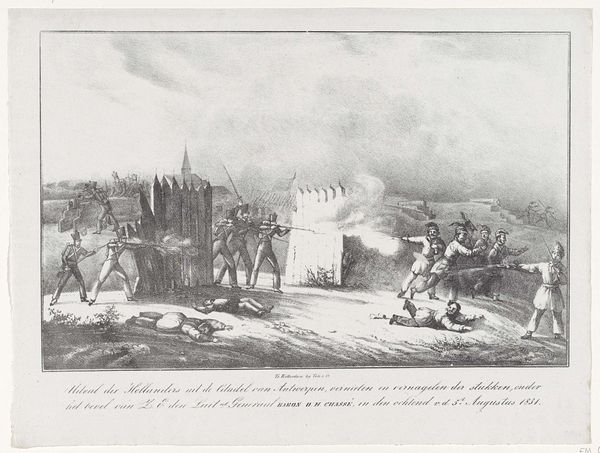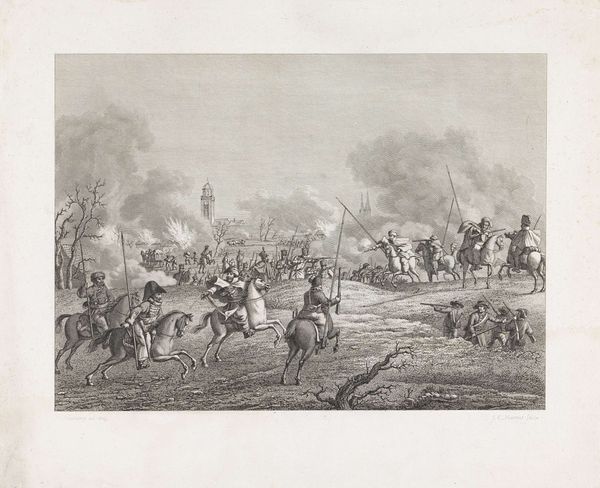
print, engraving
# print
#
old engraving style
#
landscape
#
figuration
#
archive photography
#
historical photography
#
romanticism
#
history-painting
#
engraving
#
realism
Dimensions: height 214 mm, width 267 mm
Copyright: Rijks Museum: Open Domain
Curator: The eye is immediately drawn to the chaos and the stark contrasts between light and shadow here. There is a tangible atmosphere of unease. Editor: Indeed. We are looking at a print from 1831 by J.B. Clermans entitled "Derde Divisie bij Leuven, 1831", which translates to "Third Division near Leuven, 1831". The style appears to lean towards Romanticism. It depicts a scene from the Belgian Revolution. Curator: You can feel it. Those figures are forever trapped. Are those bodies on the ground in the foreground? A leader, brandishing a sword? They are heading off to the front line but never seem to reach it. There are figures both going to the left and to the right. Editor: It speaks to the complex national identities being forged during this period. The heroic poses adopted by some figures stand in stark contrast to what appears to be their likely demise. A leader may try to look impressive atop his horse, yet the scene implies they were all simply pawns within greater social and political forces. Curator: I find it interesting that Clermans chose to immortalize a very particular scene. A very exact moment that appears to also hint at themes of uncertainty, conflict, and human frailty. Are we even intended to identify who the Third Division is battling? Editor: I think its lack of identification is the point, speaking to the everday experiences and identities erased or ignored by wars that instead highlight supposed collective unities or patriotic fervor. Also, this imagery, because it is both archived and accessible today, influences not only historical understandings of these historical battles, but continues to play a role in defining or informing a cultural identity today, a kind of Belgian cultural memory, so to speak. Curator: What this says about Romanticism's capacity to romanticize war by looking at moments when lives, dreams, and identities were extinguished… I have no words. The image certainly creates a potent dialogue. Editor: Agreed, It prompts important conversations about how history is constructed, visualized, and internalized through art.
Comments
No comments
Be the first to comment and join the conversation on the ultimate creative platform.



